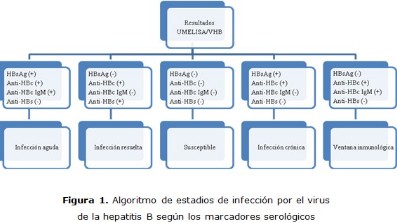Serological markers of infection for the hepatitis B virus in students of the Latin American School of Medicine
Keywords:
Palabras clave, Marcadores serológicos VHB, serología de VHB, prevalencia de VHB, virus de la hepatitis B.Abstract
Background: the hepatitis B is an important worldwide health problem. According to the WHO, it is estimated that 2000 million people have been infected and more of 360 million they are chronic carriers. The diagnosis of the hepatitis B has been done through immunological techniques to detect different viral markers.
Objective: to determine the behavior of the serological markers of the hepatitis B virus (VHB) in students of the Latin American School of Medicine during the first quarter of 2017.
Methods: a descriptive cross section study was carried out between January and March, 2017, with students of the Latin-American School of Medicine. There were studied 762 clinical samples that were received in the Provincial Center of Hygiene, Epidemiology and Microbiology. For the diagnosis the cases of reagents UltramicroELISA were used to detect entire anti-HBc, UltramicroELISA to discover HBsAg and its confirmatory test, UltramicroELISA to reveal antibodies of IgM type to the core antigen and UltramicroELISA to detect antibodies to the surface antigen, all produced by the Center of Immune-trial of Havana, Cuba.
Results: the biggest prevalence found in the stage of resolute infection, followed by the one of immunological window, acute infection and chronic infection, for a 5.25 % (n=40) of university students that have had previous contact with the VHB. On the other hand, in 94.75 % (n=722) they did not identify viral markers with the serologic tests used, defined like susceptible. The positiveness for the stage of acute infection was major in men, while for the stage of chronic infection he was older in women.
Conclusions: the obtained results demonstrate the possibility of incrementing the efficiency in the diagnosis and the epidemiological surveillance of the VHB.
DeCS: BIOMARKERS; SEROLOGIC TESTS; HEPATITIS B VIRUS; EPIDEMIOLOGICAL MONITORING; STUDENTS, MEDICAL.
Downloads
References
1. Chevrier MC, St-Louis M, Perreault J, Caron B, Castilloux C, Laroche J, et al. Detection and characterization of hepatitis B virus of anti-hepatitis B core antigen-reactive blood donors in Quebec with an in-house nucleic acid testing assay. Transfusion. 2007; 47(10):1794-802.
2. Han GR, Cao MK, Zhao W, Jiang HX, Wang CM, Bai SF, et al. A prospective and openlabel study for the efficacy and safety of telbivudine in pregnancy for the prevention of perinatal transmission of hepatitis B virus infection. J Hepatol. 2011; 55(6):1215-21.
3. Guan R, Lui HF. Treatment of hepatitis B in decompensated liver cirrhosis. Int J Hepatol. 2011; 2011:918017.
4. Bello-Corredor M, Rodríguez-Lay LA, Roodríguez-Argueta D, Montalvo-Villalba MC, Pedroso-Flaquet P, Sariego-Frómeta S, et al. Infección oculta por el virus de la hepatitis B en hijos de madres positivas al HBsAg. VacciMonitor. 2016;25(1):12-18.
5. Carneiro M, Merenho R. Natural history and clinical manifestationsof chronic hepatitis B virus. Enferm Infec Microbial Clcn. 2010;26 Suppl 7:11-18.
6. Beltrán-Durán M, Berrío-Pérez M, Bermúdez-Forero MI, Cortés-Buelvas AD, Molina-Guevara GC, Camacho-Rodríguez BA, et al. Serological profiles of hepatitis-B HBcAb-positive blood donors. 847. Rev salud pública. 2014;16 (6):847-858.
7. Reijnders JG, Rijckborst V, Sonneveld MJ, Scherbeijn SM, Boucher CA, Hansen BE, et al. Kinetics of hepatitis B surface antigen differ between treatment with peginterferon and entecavir. J Hepatol. 2011;54(3):449-54.
8. Almeida D, Tavares-Neto J, Trepo C, Almeida A, Mello C, Chemin I, et al. Occult B infection in the Brazilian northeastern region: a preliminary report. Braz J Infect Dis. 2008;12(4):310-2.
9. Allain JP, Candotti D. Diagnostic algorithm for HBV safe transfusion. Blood Transfusion.2009;7(3):174-82.
10. Norder H, Arauz-Ruiz P, Blitz L, Pujol FH, Echevarria JM, Magnius LO. The T(1858) variant predisposing to the precore stop mutation correlates with one of two major genotype F hepatitis B virus clades. J Gen Virol.2003;84(Pt 8):2083-7.
11. Behzad-Behbahani A, Mafi-Nejad A, Tabei SZ, Lankarani KB, Torab A, Moaddeb A. Anti- HBc & HBV-DNA detection in blood donors negative for hepatitis B virus surface antigen in reducing risk of transfusion associated HBV infection. Indian J Med Res. 2006;123(1):37-42.
12. Nakamura S. Serological markers of hepatitis A and B virus infection in university students. Tokohu J Exp Med.1982;138:237-238.
13. Ramírez-Soto MC, Huichi-Atamari M, Aguilar-Ancori EG, Pezo-Ochoa JD. Seroprevalencia de hepatitis viral B en estudiantes universitarios en Abancay, Perú. Rev Peru Med Exp Salud Pública. 2011;28(3):513-7.
14. Shastry S, Bhat SS. Prevention of Post-Transfusion Hepatitis by Screening of Antibody to Hepatitis B Core Antigen in Healthy Blood Donors. Mediterr J Hematol Infect Dis. 2011;3(1):e2011062.
15. OPS/OMS. La hepatitis B y C bajo la lupa. La respuesta de salud pública en la Región de las Américas 2016. Washington, D.C.:OPS;2016.

Published
How to Cite
Issue
Section
License
Copyright: Camagüey Medical Archive Magazine, offers immediately after being indexed in the SciELO Project; Open access to the full text of the articles under the principle of making available and free the research to promote the exchange of global knowledge and contribute to a greater extension, publication, evaluation and extensive use of the articles that can be used without purpose As long as reference is made to the primary source.
Conflicts of interest: authors must declare in a mandatory manner the presence or not of conflicts of interest in relation to the investigation presented.
(Download Statement of potential conflicts of interest)
The Revista Archivo Médico de Camagüey is under a License Creative Commons Attribution-Noncommercial-No Derivative Works 4.0 International (CC BY 4.0).
This license allows others to distribute, to mix, to adjust and to build from its work, even for commercial purposes, as long as it is recognized the authorship of the original creation. This is the most helpful license offered. Recommended for maximum dissemination and use of licensed materials. The full license can be found at: https://creativecommons.org/licenses/












 22 julio 2025
22 julio 2025